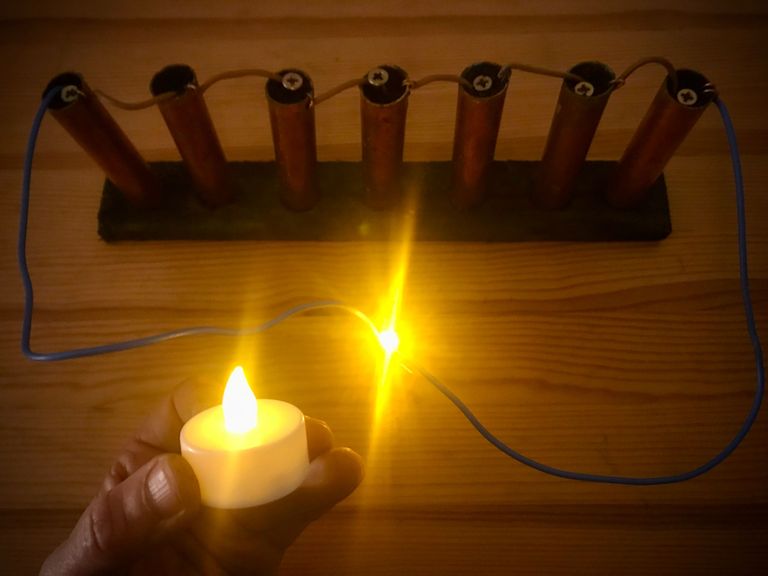
I propose that a collection of seven copper tubes filled with moist salty soil and steel screws will maintain an LED at full brightness longer than a 3V lithium battery. Further to this I believe my earth battery will not only outlive the 3V lithium battery, but it will outlive many more because it seems to me that in order for the electrons to stop flowing between the cathode (copper tubes) and the anode (steel screws) either the tubes or the screws need to dissolve completely, which may take years. Perhaps even decades?
I will therefore keep on adding new 3V batteries to the lithium powered light every time the luminosity drops below par, taking note of how many batteries have been used. The only 'fuel' I will add to my earth battery is salty water and potentially fresh soil.
In order to avoid any question of trickery I have removed the outer casing of the earth battery LED, connecting it directly to the positive & negative outputs.
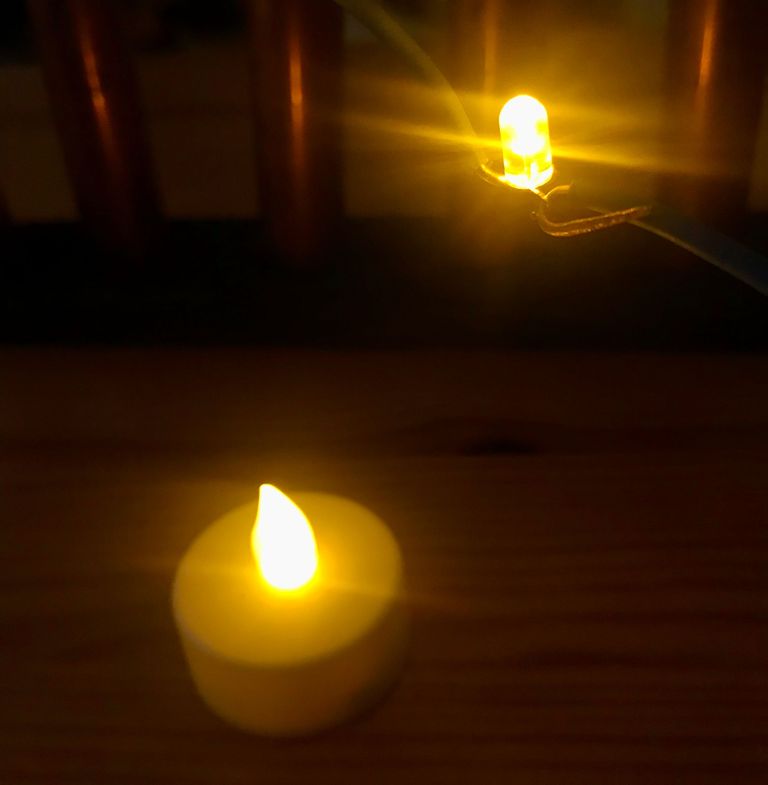
If you are keen to know exactly how I made the earth battery you will find the details in this post. The voltage & amperage from the set-up described in that post however was not sufficient to match the brightness of the lithium powered light, so I adjusted two things:
I added longer screws which now reach down all the way to the bottom of the tubes.
I added salt water (instead of pure water) to the soil in the tubes.
This boosted my power significantly and as you can see the two identical LEDs are now around the same brightness.

Rules
Both lights must stay on continuously and maintain an equal brightness.
If the earth battery stops working due to the build-up of deposits (which I suspect will happen eventually) it may be taken apart and cleaned but it must be put back together in exactly the same way without any additions to the original design.
If the earth battery stops working due to a problem with the soil, the soil may be replaced.
When the lithium powered LED becomes noticeably less bright than the earth battery powered LED, the battery will be changed to achieve equal brightness again.
When the earth battery powered LED is unable to match the brightness of the lithium powered LED (and cleaning the device or adding new soil makes no difference) the experiment will come to an end and I will be able to tell you how many 3V lithium batteries a device like this (which cost me around €15 to build) can save you from buying.
At the bottom of every post I write (potentially for the next decade!) there will be an update indicating two things: how many days the lights have been on and how many lithium batteries have so far been used in the experiment.
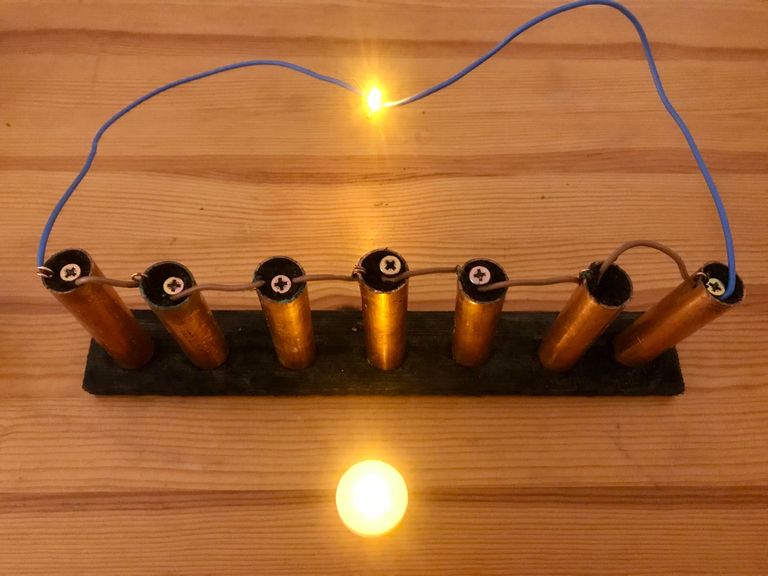
I considered housing the device in a sealed unit to prevent evaporation but the copper tubes provide a simple enough way to keep it moist by dripping the salt water directly into the top with a pipette. Can't say for sure yet but I imagine I will have to add the salt water every two or three days, depending on the time of year.
The intensity of this light is perfect as a nightlight for the bedroom of young children who generally don't like sleeping in pitch black conditions, so my experiment will sit here and provide a useful function at the same time.
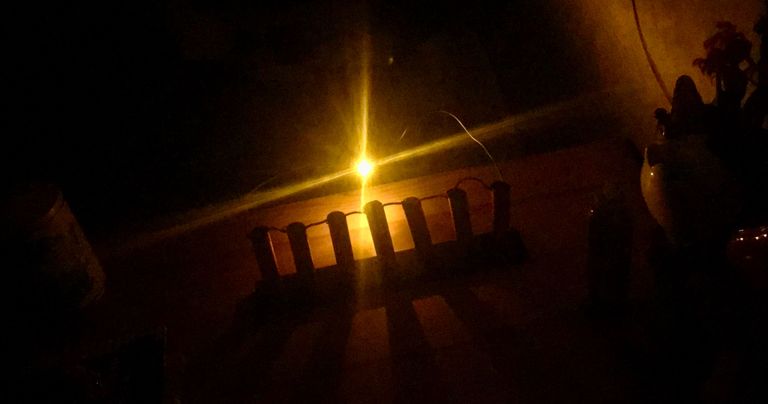
The intensity is sufficient enough that it could also be a bedside reading light for adults.
Final thoughts
My intention with this experiment is not so much to prove the effectiveness of earth batteries against lithium but more to get you all thinking about how easy it is to produce your own electricity at home.
In fact you don't even need soil or copper pipe. You can simply use copper wire, tin foil and wet tissue, as described in my previous post.
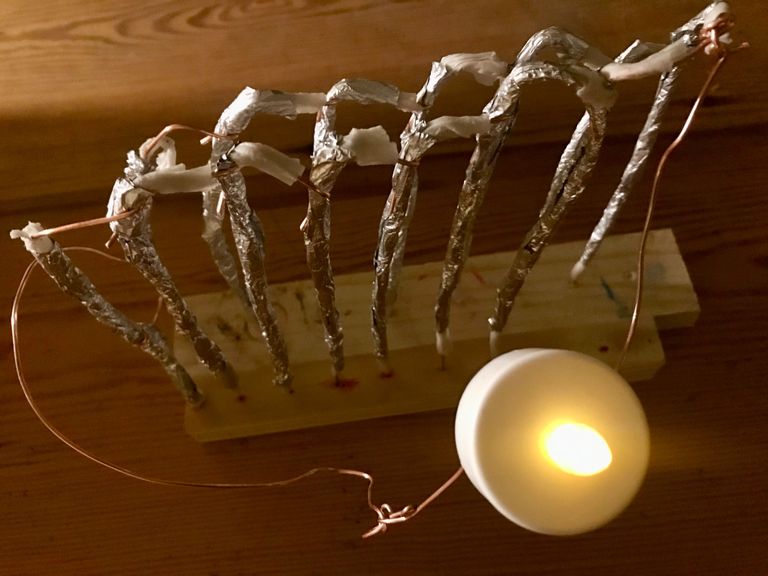
There was a time not all that long ago when this stuff was common knowledge to us, but it was erased from our collective consciousness during the last century due to its inconvenient conflict with the energy industry who would much rather we rely on them for all our energy needs.
While this is certainly an interesting experiment to get the juices flowing in regards to what is possible I am in fact much more excited about my upcoming project to build the capacitor described in my last post.
Unlike my earth battery this device can store energy and release it back to me at a much higher rate, eliminating any need for a connection to the grid or so called green energies such as solar or wind.
This is how I am going to power a waterproof camera in my garden for three months in order to shoot a time-lapse film which categorically proves the effectiveness of electrocultre alongside a control group.
Please tag me in to your findings if any of you feel inspired enough to start playing with electrical ideas of your own.
Let us conduct our experiments in a professional manner and support each other with accurate and honest updates on this immutable blockchain in order that we may become the world's most efficient decentralised research team on the cutting edge of re-discovering that which was once known.
Love & Light everyone 🌱
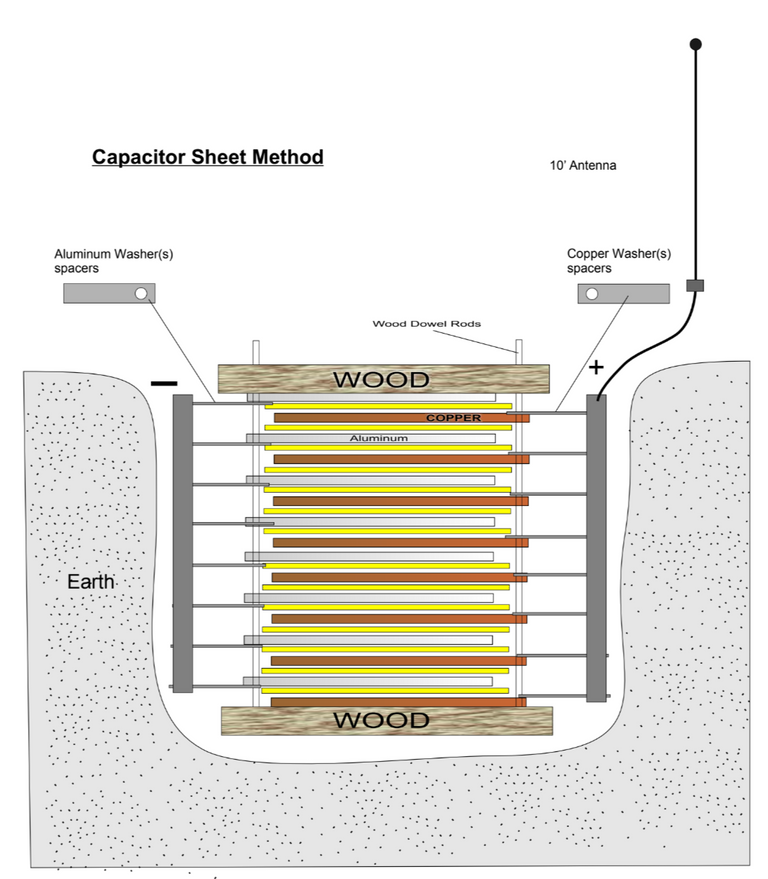
This is pretty much the design of Volta's first battery.
Yes, it works, but need to top up the electrolyte. Like a car battery.
This is great! I just looked up Volta and I see he was doing it a long time before anyone else.
Before 1800 even! Amazing.
Yes, I would say we add around 1/2 teaspoon of salty water per day (per tube) to keep the light going.
Am really just curious to see how long it can run for...
The whole area of bio-electricity was a big topic 200 years ago - the Frankenstein novel was based on real experiments! Volta and Galvani argued about whether the soul was electric ;-) Then the whole area got squashed out of mainstream. Later, even Mesmer did legit research, but is now assumed to be a joke. The elite that run publishing and research want to focus on the man-machine - sadly, most are too ignorant to even experience that this is not true.
Anyway, good luck with the experiments.
Something I would try is to connect one battery to one of those metal pyramid - if you have a Hall probe (fairly cheap) you can measure the magnetic fields, as will depend on where the connections are made on a pyramid - the resultant field is non-obvious, hence easier to measure than to calculate.
;-)
This is kinda interesting (altho not what I suggested, but related to the way energy scatters in a pyramis)
https://www.researchgate.net/publication/326530154_Electromagnetic_properties_of_the_Great_Pyramid_First_multipole_resonances_and_energy_concentration
(always worth searching for paywalled research articles, as often can be found free!)
If you skip through all the maths (unless you understand it) and look at the images, especially the 3rd set (i think) you will see how the largest field is in the centre and runs just below the surface of the ground. ;-)
So makes a huge difference having a pyramid on a table and actually on the earth!